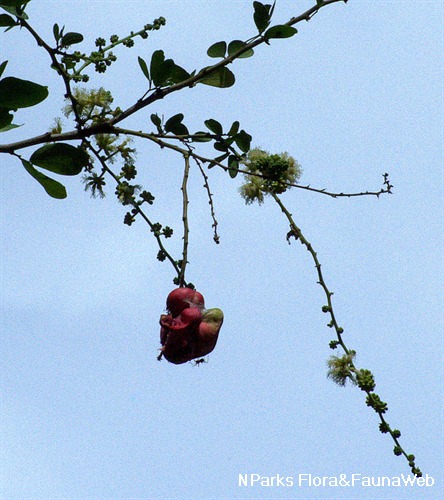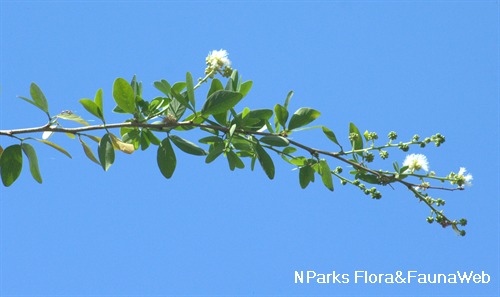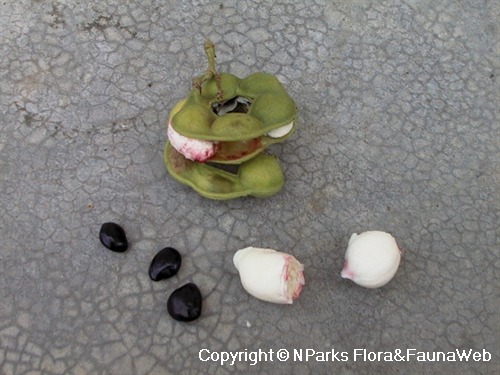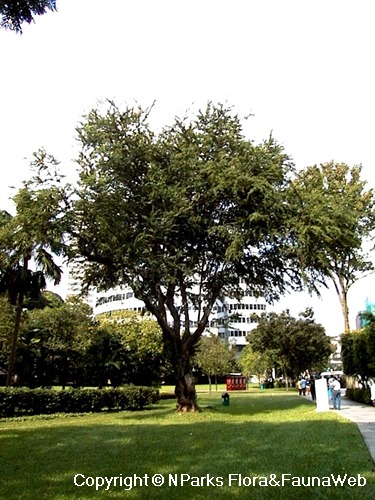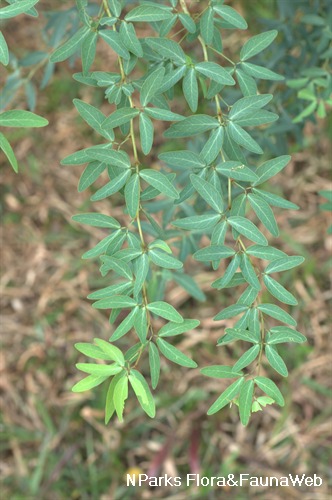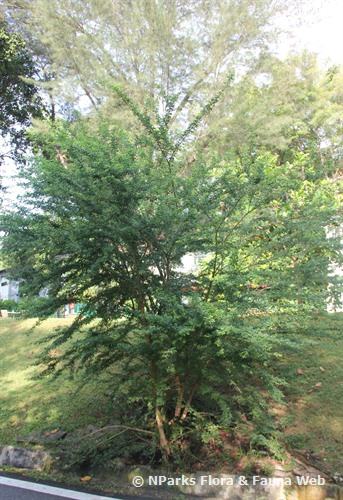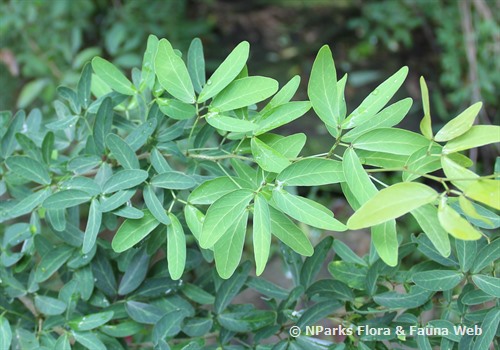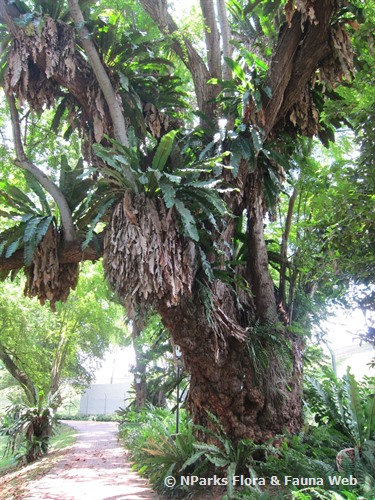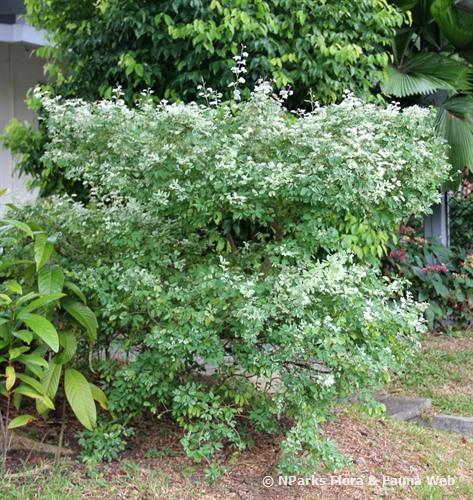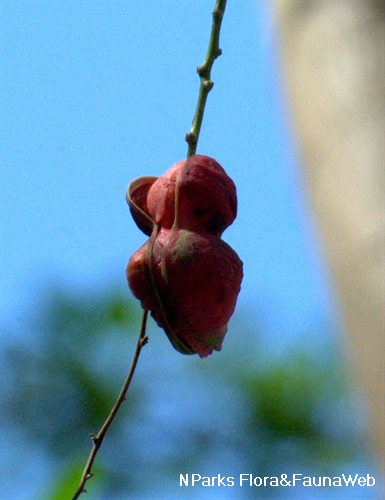
Back
Pithecellobium dulce
| Family Name: | Fabaceae (Leguminosae) |
| Synonyms: | Mimosa dulcis |
| Common Name: | Madras Thorn, Manila Tamarind, Bread-and-cheese, Huamuchil, Opiuma, Asam Keranji, Blackhead, Asam Kranji, Asam Tjina, 牛蹄豆 |
Name
Classifications and Characteristics
| Plant Division | Angiosperms (Flowering Seed Plants) |
|---|---|
| Plant Growth Form | Tree |
Biogeography
| Native Distribution | Tropical America |
|---|---|
| Native Habitat | Terrestrial |
| Local Conservation Status | Non-native (Spontaneous (Casual)) |
Description and Ethnobotany
| Growth Form | It is tree, up to 15 m tall, single or multiple trunks with dense bushy crown. Trunk become gnarled with age and twigs have a pair of sharp spines at the base of the leaf stalks which are modified from stipules. |
|---|---|
| Foliage | Leaf is bipinnate, comprises of 2 pinnae and each pinnae has 2 leaflets. Leaflet is elliptic to obovate-elliptic (2 – 5 cm long and 0.2 – 2.5 cm wide) with rounded to heart-shaped tip and unequal base. Circular gland is present at the junction between the pinnae and leaflets. |
| Flowers | Flower is small, cream-white coloured and occurs in groups of 8 – 20, which resembles a round head. |
| Fruit | Fruit is spirally coiled into a circle (about 5 – 7 cm diameter), ripening from green to red or brown and splits open along both edges to reveal 5 – 9 seeds within. Seed is glossy black, oval-elliptical (0.9 – 1.2 cm long and 0.7 cm wide) with fleshy white or pinkish edible aril, covering the lower half of the seed. |
| Habitat | It is found in open and disturbed fields, up to altitude 500 m. |
| Etymology | The genus Pithecellobium comprises of Greek pithekos, meaning monkey and Greek ellobium, meaning earring, which refers to the fruit pod’s close resemblance to a monkey’s earring. Specific epithet dulce, Latin for sweet, refers to the sweet tasting seed aril. |
| Ethnobotanical Uses | Edible Plant Parts : Edible Fruits Food (Fruit or Vegetable) Cultural / Religious: Heritage Tree: There are 6 individuals of Pithecellobium dulce listed as Heritage Trees in Singapore. They are mainly found in Fort Canning Park. To find out more about these trees, please visit the Heritage Tree Register. Others: The white fleshy aril is edible and sweet and seed can be used for animal feed. Boiled leaves can be eaten with salt to help indigestion, but excessive consumption may induce abortion. Bark produces gum which is used for tanning and dyeing fish nets. Bark can be grounded into powder and applied on skin to treat scorpion sting |
Landscaping Features
| Landscape Uses | Parks & Gardens |
|---|
Plant Care and Propagation
| Light Preference | Full Sun |
|---|---|
| Water Preference | Moderate Water |
| Plant Growth Rate | Moderate |
Foliar
| Mature Foliage Colour(s) | Green |
|---|---|
| Leaf Area Index (LAI) for Green Plot Ratio | 2.5 (Tree - Open Canopy) |
Floral (Angiosperm)
| Flower Colour(s) | White |
|---|
References
| References | Gardner, S., Sidisunthorn, P., & Chayamarit, K.. 2016. Forest Trees of Southern Thailand. Volume 2.. Bangkok: Kobfai Publishing Project. 792pp. |
|---|
Image Repository
Others
| Master ID | 1772 |
|---|---|
| Species ID | 3065 |
| Flora Disclaimer | The information in this website has been compiled from reliable sources, such as reference works on medicinal plants. It is not a substitute for medical advice or treatment and NParks does not purport to provide any medical advice. Readers should always consult his/her physician before using or consuming a plant for medicinal purposes. |

